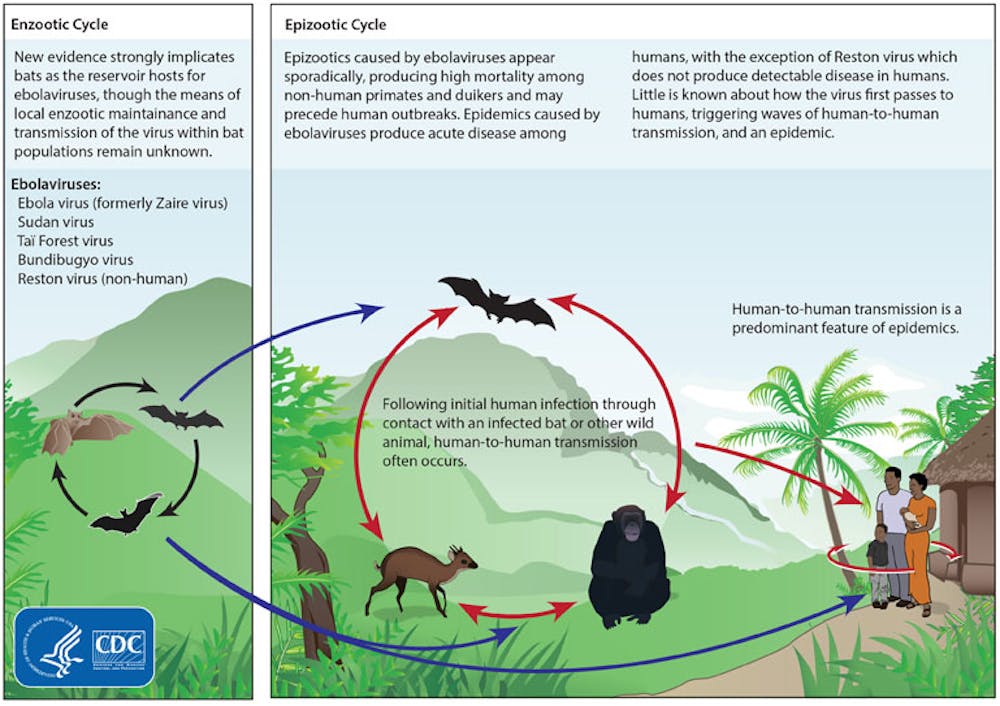While news on the 2014 Ebola outbreak is dying down, its impacts, especially for the environment, are not.
Confined primarily to West Africa, the recent Ebola outbreak has claimed approximately 2,630 lives, with over 5,700 cases reported, according to the World Health Organization (WHO). This disease is believed to be animal-borne, with fruit bats of the Pteropodidae family acting as the natural Ebola virus hosts. Humans first contracted the virus via contact with bodily fluids of an infected animal, where it was then spread to other humans by contact with the bodily fluids of an infection person. Poor sanitation conditions in West Africa coupled with mourners coming into contact with the deceased at burial ceremonies enabled the disease to spread rapidly.
Sadly, Ebola is just one of many diseases considered to be “zoonotic”, or shared with animals. When a disease is able to be shared with animals, its impacts are intensified. If a human is sick, they are able to generally keep to themselves until they are healed avoiding spreading their sickness. But with animals, this is not the case. Other animals that can transmit this disease (a wide variety of monkeys) may continue to come into contact with the disease-carrying bats, or even other animals who received the virus in the wilderness.
Perhaps one of the most concerning thoughts about zoonotic viruses is that humans tend to be responsible for these diseases being passed along to other humans.
As New York Times author Andrew Revkin declared in a recent article “A Closer Look at the Ebola Epidemic in the Context of Ecological Health” posted to his Dot Earth blog, “The more we expand the footprint of human populations, encroaching upon and altering natural habitats in order to extract resources, intensify food production and move animals and people –and the pathogens they carry- the greater the potential for infection and the spread of pathogens novel to humans.”
People are disrupting natural resources through all the moving they are doing. This disruption plays a huge role in the spread of diseases. Take, for example, the 1994 Ebola outbreak. This outbreak was confined to the small African country of Gabon, and took 31 lives. It occurred in gold mining camps, which saw frequent nomadic habits of people - moving in for a season, moving out when the work was complete. What if people had never disrupted nature’s patterns in order to mine? Would anyone have moved there and risked coming into contact with disease carrying animals? If people had lived there, would they have been there permanently; not spreading the disease by relocating?
These questions will likely never be settled. However, the recent theories on how Ebola and other diseases are impacting the environment beg us to look at our world from a different perspective. Earth is not just humans, but rather we are tied to other species. If we don’t begin to look at the world around us as being more than just us, we risk letting future diseases become even more disastrous than the 2014 Ebola outbreak.
Photo License: Creative Commons
The Relationship between the Environment and Ebola

